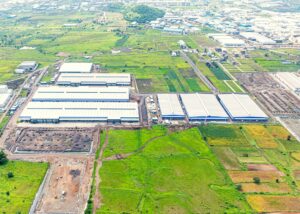Author: Piyush Kumar Singh

Piyush Kumar Singh, Trade Expert & Consultant – Logistics/SCM, shared his views on the driving factors and challenges faced by the automobile logistics companies. Further, he also explains the role of technology and innovations in the automobile supply chain and what are some emerging trends in the automobile logistics industry and how companies in this industry can thrive.
How has the automobile logistics industry evolved over the past decade, and what factors have driven these changes?
The automobile logistics industry has undergone significant changes over the past decade, driven by several factors such as technological advancements, changing consumer preferences, and increasing globalization. Some of the keyways in which the industry has evolved are:
Adoption of new technologies: The industry has embraced new technologies to streamline operations and improve efficiency. For example, many companies are now using GPS tracking and telematics to monitor their fleets, optimize routes, and reduce fuel consumption.
Shift towards sustainability: There has been a growing emphasis on sustainability in the automobile logistics industry, driven in part by changing consumer preferences. As a result, companies are increasingly looking to reduce their carbon footprint by adopting more fuel-efficient vehicles, optimizing their routes, and exploring alternative fuels.
Increased globalization: The rise of e-commerce has made it easier for consumers to purchase vehicles from overseas, leading to an increase in global trade. This has created new challenges for the automobile logistics industry, as companies must navigate complex regulations and logistical hurdles to transport vehicles across borders.
Shift towards electric vehicles: The shift towards electric vehicles has also had an impact on the automobile logistics industry, as companies must adapt their operations to accommodate the different requirements of these vehicles. For example, electric vehicles require different charging infrastructure and may have different weight and size considerations.
Changing consumer expectations: Finally, changing consumer expectations have also driven changes in automobile logistics. Overall, the industry has undergone significant changes over the past decade, driven by a range of factors.
What are some of the biggest challenges faced by automobile logistics today, and how are companies addressing these challenges?
The automobile logistics industry faces several challenges today, including:
Complex regulations: The transportation of vehicles is subject to complex regulations and legal requirements, particularly when crossing international borders. Companies must navigate these regulations to ensure compliance and avoid delays or penalties.
Capacity constraints: As global trade has increased, the demand for automobile logistics services has grown. However, there are capacity constraints in certain regions, particularly during peak periods.
Environmental concerns: The industry is under increasing pressure to reduce its environmental impact. This includes reducing emissions from vehicles and improving the sustainability of logistics operations.
Cybersecurity risks: As the industry becomes more reliant on technology, there is a growing risk of cybersecurity breaches.
Overall, automobile companies are taking proactive steps to address the challenges they face. By collaborating with others in the industry, adopting new technologies, and implementing sustainability and cybersecurity initiatives, they are working to improve efficiency, reduce costs, and enhance the customer experience.
What role does technology play in automobile logistics, and what new innovations are you seeing emerging in the industry?
Technology plays a critical role in the automobile logistics industry, enabling companies to improve efficiency, reduce costs, and enhance the customer experience. Some of the key technologies that are currently being used in automobile logistics include:
GPS tracking: GPS tracking allows companies to monitor the location of their vehicles in real-time, enabling them to optimize routes, improve delivery times, and reduce fuel consumption.
Telematics: Telematics involves the use of sensors and communication technologies to collect data on vehicle performance and driver behaviour.
Blockchain: Blockchain technology can be used to create secure, decentralized systems for tracking the movement of vehicles and parts through the supply chain.
Autonomous vehicles: Autonomous vehicles have the potential to revolutionize the automobile logistics industry, enabling companies to reduce labor costs, improve safety, and increase efficiency.
Augmented reality: Augmented reality technology can be used to provide workers with real-time information and instructions, improving productivity and reducing errors.
Artificial intelligence: Artificial intelligence can be used to analyze large amounts of data, helping companies to optimize routes, predict demand, and identify areas for improvement.
Drones: Drones have the potential to revolutionize last-mile delivery, enabling companies to deliver vehicles and parts directly to customers in hard-to-reach areas.
3D printing: 3D printing technology could be used to produce spare parts on demand, reducing the need for large inventories and improving supply chain efficiency.
Internet of Things: The Internet of Things (IoT) involves the use of connected devices to collect and share data. Overall, technology is playing an increasingly important role in the automobile logistics industry, enabling companies to improve efficiency, reduce costs, and enhance the customer experience.
How do companies ensure that vehicles are transported safely and efficiently throughout the supply chain, and what steps are taken to mitigate risks?
Ensuring safe and efficient transportation of vehicles throughout the supply chain is a critical concern for companies in the automobile logistics industry. To achieve this, companies take a comprehensive approach to ensuring the safe and efficient transport of vehicles throughout the supply chain. By conducting thorough risk assessments, providing extensive training, complying with regulations, maintaining equipment, using advanced tracking and monitoring technologies, employing security measures, and fostering effective communication and collaboration, these companies are able to mitigate risks and ensure the timely and secure delivery of vehicles to their final destinations.
What are some of the trends you see emerging in the automobile logistics industry over the next five to ten years, and how are companies preparing themselves for these changes?
Here are some general trends that have been observed and may continue to emerge in the next five to ten years:
Electric vehicles: With increasing demand for electric vehicles, logistics companies will need to adapt to transport them safely, securely, and efficiently.
Autonomous vehicles: With the development of autonomous vehicles, logistics companies may need to change their strategies to transport these vehicles without drivers.
Sustainability: Consumers are becoming more environmentally conscious, and logistics companies will need to respond by reducing their carbon footprint.
E-commerce: The rise of e-commerce has changed consumer behavior and expectations, and logistics companies will need to adapt to meet these demands. Also need to develop new skill sets among their employees and adopt new business models to stay competitive.





